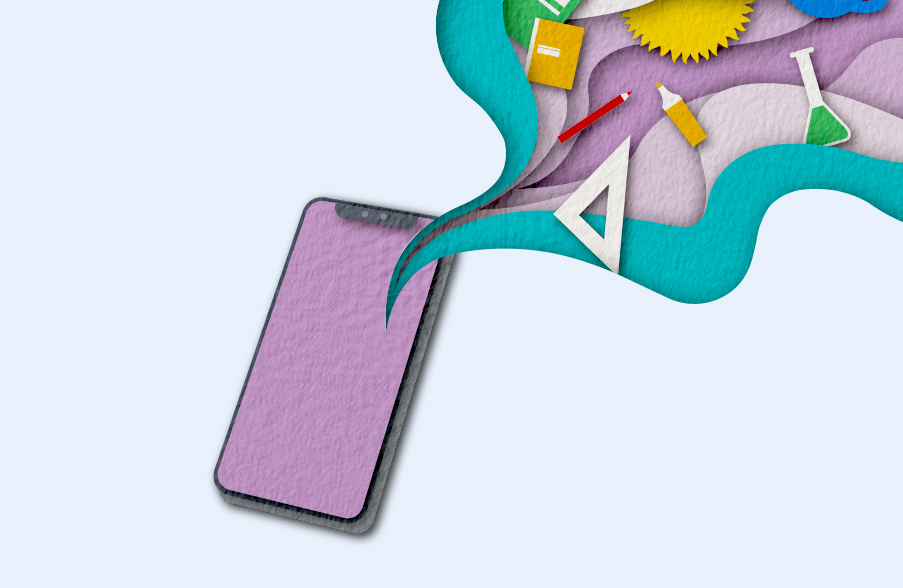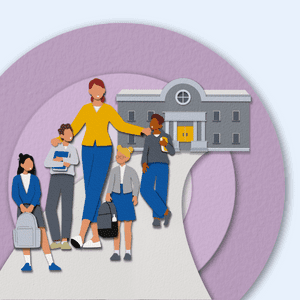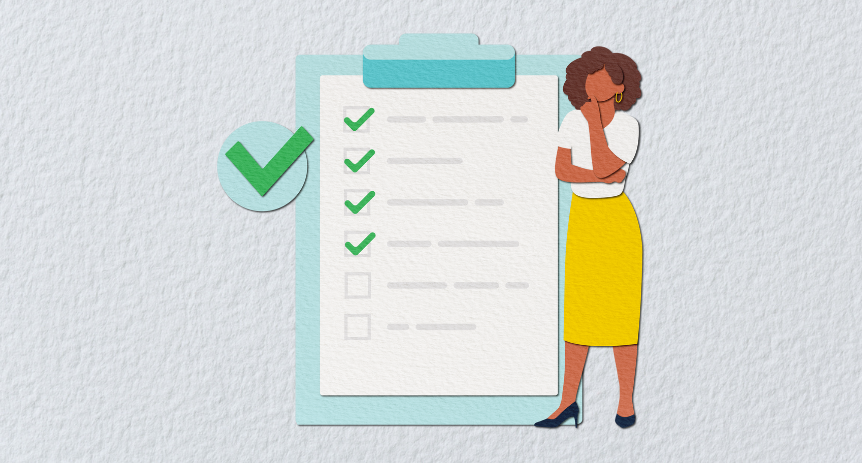No matter how thoroughly you craft your lesson plan, there will come a day when you find yourself with extra time at the end of class. Rather than waste valuable learning time, come equipped with activities to engage your students. Not every activity will be a good fit for every school you substitute at, so be sure to check with the administration if you’re unsure.
Read on for creative projects, movement based activities, as well as writing and thought experiments for all your elementary school needs!
Register to become a sub with Swing today
Elementary school
1. Create a classroom newspaper
Have students work together to create a classroom newspaper. Assign different roles such as reporters, editors, illustrators, and photographers. They can write about recent school events, interesting facts they’ve learned, or even create comic strips. At the end of the activity, distribute copies of the newspaper to the class or display it on a bulletin board.
2. Conduct a science experiment
Create a simple science experiment that aligns with the current curriculum or recent topics discussed in class. It could be something as straightforward as making a volcano with baking soda and vinegar or observing the growth of plants from seeds. Science experiments not only engage students but also reinforce learning through hands-on experience.
3. Musical chairs with a twist
Put a twist on the classic game of musical chairs by incorporating educational elements. Instead of just removing chairs when the music stops, place flashcards or question cards on each chair. When the music stops, students must answer the question or solve the problem on the card to remain in the game. This adds an element of learning and review while keeping the game fun and interactive.
4. Create a time capsule
Have students work together to create a time capsule that represents their current interests, goals, and memories. They can bring in small items or write letters to their future selves to include in the capsule. Seal it and set a date in the future for it to be opened, such as the end of the school year or several years later when they’ve progressed to a higher grade. It’s a meaningful way for students to reflect on their experiences and look forward to the future.
5. Tell a communal story
Ask students to generate a story that begins with “once upon a time” and incorporates a list of concepts or words you select from class material. You can also use story cubes (or make your own!) to inspire them with images. They’ll enjoy the fun that comes with the randomness of rolling dice.
With younger students, do this activity together aloud; with older students, you may choose to use this as a writing activity.
6. Create a card
Give students time to make a card for someone special in their lives. This incorporates drawing, coloring (which are both excellent activities for developing fine motor skills), and writing.
Special paper (card stock, colored paper, etc) can go a long way in motivating students to do their best work on an activity like this. If special paper is not available, teach the kids an interesting way to fold cards. This can be a treasured opportunity to create something meaningful and fun, especially for younger classes.
7. Tell (or write) a descriptive story about a picture
Bring in a photograph or art print, grab one from a book in the classroom, or project one from the internet. Ask your students to describe the picture in as much detail as possible by using specific sensory words and adjectives. Write those words on the board, and encourage kids to hypothesize what is going on in the photo. Encourage students to use their imaginations to tell or write a story, depending on the class age. Share the different observations.
8. Play ‘Would You Rather’
Findings by Stanford researchers show games help develop patience, engagement, and discipline — skills that correlate with success even more highly than IQ.
“Would You Rather” is a fun, silly game that has the added bonus of helping you get to know your students a little better. You simply ask questions such as, “would you rather be turned into a giant bunny rabbit or a miniature giraffe?” or “would you rather sneeze 75 times every single day or always have to wear flip-flops everywhere you go?”
Here’s a list of 200 questions to help you get started.
9. Play ‘Doggy Doggy, Where’s Your Bone’
For this game, you’ll need a pencil and a chair. One student plays the role of the doggy and sits in the chair with their back to the group and eyes covered (with their hands or a blindfold). Another student quietly steals the “bone” (pencil).
Everyone sings,
‘Doggy, doggy, where’s your bone?
Somebody stole it from your home.’
The child in the chair has three chances to guess who took it. No matter if the student in the chair guesses wrong, the student who took the bone will get a turn as the dog. Be sure to rotate often so everyone gets a chance to guess!
10. Play a screen-based game as a class
Consider engaging students in a screen-based game. If your students have access to computers, check out offerings from PBS or Fun Brain. If you’re projecting from one computer in front of the class, find a quiz video or other group online game. If kids have access to individual computers, look at Kahoot! to choose from preselected learning games.
As always, remember that most schools have a policy on computers, so be sure to ask about what might be appropriate for the classroom you’re subbing in.
11. Host a group work showdown
Divide older elementary students into small groups. Each group gets the same set of review questions to work on. (This material can review the day’s work or a work from a larger chapter/unit. Often these questions can be found in the text.) The group that finishes first with the most correct answers wins.
12. Read aloud
Never underestimate the power of story time. There are many benefits to reading aloud to children. No matter what their age, most elementary students transform once they are captivated by a book. Whether you have them remain seated at their desks or invite them to sit in a circle around you, choose a book or two from the teacher’s collection (or ask if anyone has a favorite they can share) and let them get lost in a good story.
If you’re familiar with the classic word-finding game of Hangman, you’ll know how to play these more culturally sensitive versions of the game. You’ll get the same learning benefit of the original and also learn to draw something far more appropriate for the elementary school classroom.
14. Strike a pose
Play a song and tell students to freeze and strike a pose when the music stops. Use a variety of tempos and musical styles to mix up the fun.
15. Do a little mirroring
Mirroring is a way to focus children and develop concentration skills. Students stand facing each other and pretend they’re looking in the mirror. Tell them to move slowly. The goal is to copy each other’s movements precisely. Allow one child to lead first, and then the other. Then, challenge them to mirror each other without one specified leader.
Long-term elementary school subs
These movement-based activities for elementary classrooms work best for subs who are confident in classroom management and have gotten permission to use them with school administrators. Always remember to prioritize student safety, and be sure to remind students not to travel beyond the personal space they take up with arms spread.
16. Create a classroom cookbook
Have students contribute their favorite recipes to create a classroom cookbook. This activity combines elements of writing, creativity, and collaboration. Students can write out their recipes, draw illustrations, and even bring in samples of the dishes for a tasting session. The final cookbook can be printed and shared with families or kept in the classroom library.
17. Hold a mini yoga class
Long-term subs can benefit from creating short moments of repetition that happen every day. This activity works best as part of a routine: maybe the first thing you do after lunch or after the bell, for example.
You might think of it as an adult pastime, but yoga is perfectly suited for children, too. It enhances their strength, balance, and coordination, and it promotes awareness and calm. See these 10 Commandments of Teaching Kids Yoga for ideas on how to keep it fun and productive.
18. Dance it out
Research from leading universities has shown dancing has beneficial effects on the brain. It even stimulates reward centers, improves memories, and strengthens neural connections! This idea works especially well for young students (grades K-3).
Turn on a cool, age-appropriate song, and let your students boogie down before you wrap up the class or change activities.
19. Have them touch the rainbow
This is a great game for young children, and can lead well into a change of activities. Tell students that when you call out a color, they must find it in the room and touch it. Remind students of appropriate classroom rules (ex: “no running”). They’ll speed-walk to touch posters, furniture, and other classroom items. After you’ve led the game for a few turns, let a student take over and be in charge of the fun.
20. Do some exercises together
Jumping jacks, jogging in place, planks, and other simple exercises are easy to do without traveling across the room.
They can even be used to accompany a lesson! Ask a student to spell out vocabulary words while they do jumping jacks or jog in place while they recite a poem. For younger children, try out a video program like Go Noodle.
These activities offer a mix of creativity, collaboration, and educational value, making them suitable for various classroom settings and age groups.




